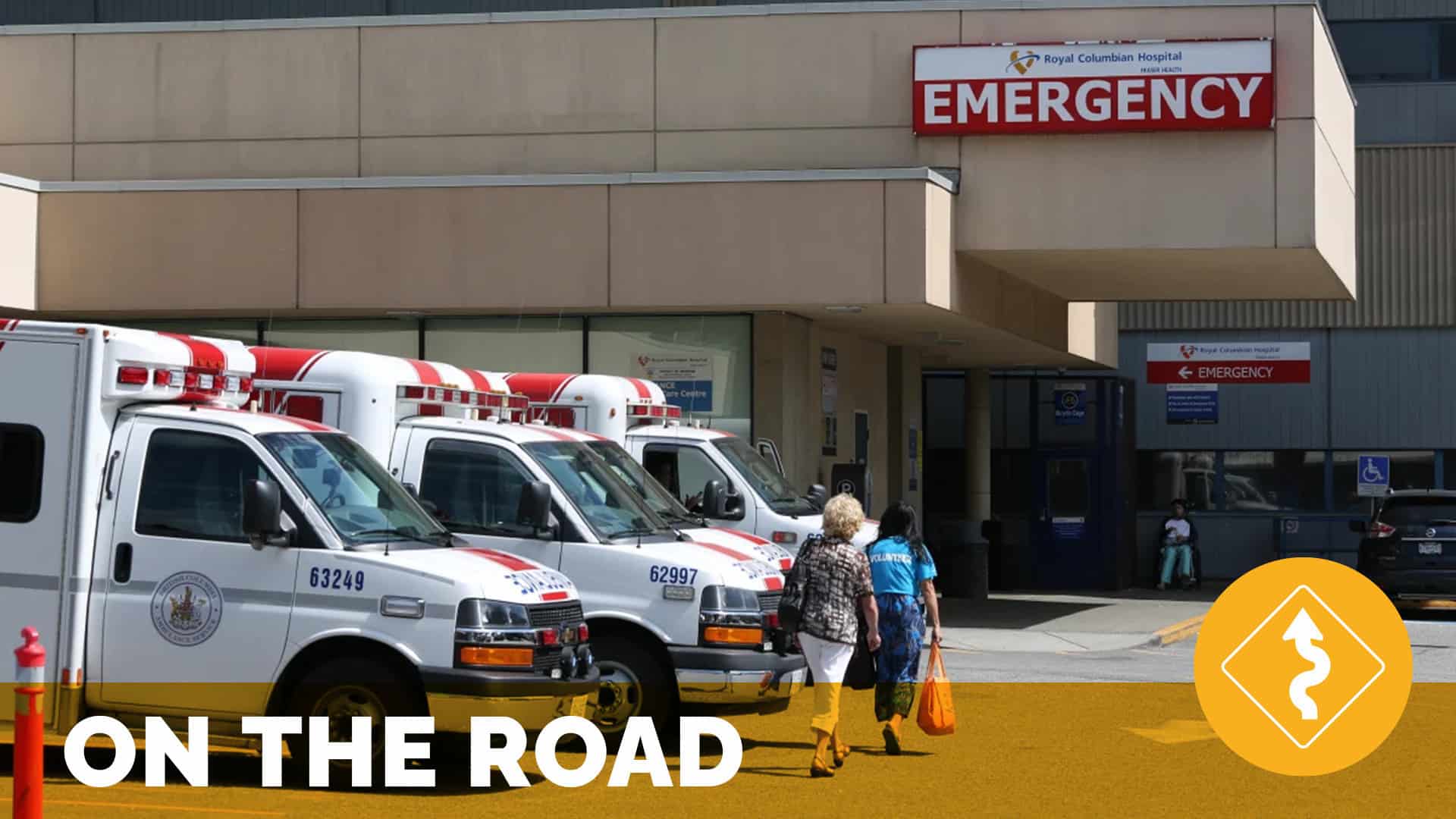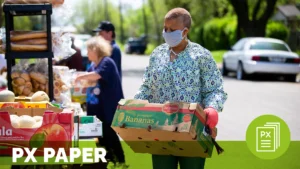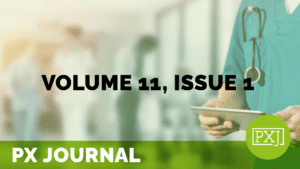Improving the Patient Experience in the Emergency Department

On the Road in British Columbia, Canada – March 2011
by Jason A. Wolf
My On the Road travels continued in March at the gracious invitation of Lena Cuthbertson, the Provincial Director, Patient-Centered Performance Measurement & Improvement, Clinical Care and Patient Safety Branch, Ministry of Health, British Columbia (BC) and Co-Chair of the BC Patient Satisfaction Steering Committee. The long trip to the Northwest region of the continent was matched by an extensive journey across the province by road and by phone that provided a powerful overview of what BC has been focused on in driving patient experience, namely in the Emergency Department (ED).
So why the ED specifically? This is an area on which BC and their extensive measurement efforts related to patient experience of care have been fundamentally focused since 2007 through a continuous surveying effort. This focus also allowed us to get a sense of what was happening across the province versus simply one facility. It provided a means to look for patterns of success and opportunities for improvement that drive patient satisfaction and experience at what many say is the “front door” to any hospital, the emergency department.
What I saw through my visits and conversations was a collective effort to meet the needs of communities and citizens, no different from what you would see in any hospital in any country. The same struggles exist there, that I hear about from colleagues or Institute members in the U.S., the U.K., Australia and elsewhere; the ED is the place of ultimate need and significant expectation. It hinges on the issues of flow and communication, is driven by process and throughput and is collectively focused on the best outcomes for patients. Through my experiences and observations I hope to tell the story of an effort committed to the ultimate in patient and family experience, informed by data, driven by action and committed to care.
An Overview of the Visit
My two days spent across the BC system afforded me a chance to interact with each of the six regional health authorities and supporting organizations that support experience, quality and safety across the province. My intention here is not to share my visits in sequence, but rather to talk about the key supporting themes I experienced in my travels, from tours of three specific EDs to conversations with regional leaders. While I may not have the space to cover every conversation or identify every inpidual I spoke with during my visit, each and every one of the over 30 people I had the chance to meet helped shaped this story.
Through my visits to the emergency departments at Royal Columbian Hospital, Surrey Memorial Hospital and Lions Gate Hospital current and emerging practices in support of experience success were highlighted. Through my conversations with other key leaders and supporting organizations a number of improvement efforts were shared. Aside from common practices that have been implemented to drive experience in the ED, I will also touch on some broader initiatives that help pull the picture together.
Core Practices, Key Programs and Overall Success Themes
In sharing common practices helping to improve patient experience in the ED setting I look to the efforts of three very different settings, the EDs at Royal Colombian, Surrey and Lions Gate. While each location had its own unique challenges I believe they face the same challenges any hospital in any country faces – namely growing and changing populations, physical space constraints, rapidly increasing ED volumes, etc.; they also seemed focused on a set of core processes that helped support better experiences in the ED. In looking at these examples we see common practices not only found in BC, but rather central to effective emergency care overall.
A unique aspect of emergency care in Canada is the use of a common triage coding system across the country – The Canadian Triage & Acuity Scale (CTAS, see overview below) – which makes both addressing care needs and reporting on acuity and outcomes more consistent than elsewhere. For example in the US, there is still variability between a 3, 4, or 5 level system, though the trends are now towards a five-level system such as CTAS (source: Agency for Healthcare Research and Quality, Emergency Severity Index, Version 4, http://www.ahrq.gov/research/esi/esi2.htm). It is through this system of acuity that many decisions are made and processes are based.\
Emergency Department – Royal Columbian
Jackie Askew, the ED Manager at Royal Columbian, first introduced me to the CTAS system. In sharing with me the critical process of intake and triage, we discussed the importance of supporting the most effective flow through the department. One of her goals in managing the ED was to ensure speed to care and she talked about the processes she undertook in engaging staff on what changes would be most beneficial to how they operated in the department. A key idea mentioned was the implementation of streaming, a process that enables patients to be seen via the most effective care stream and related to their CTAS rating.
“Being able to move people effectively through the ED is a team effort,” Jackie noted. “We must be willing to communicate with each other, have the right systems in place and then work to execute effectively.” This was exemplified recently when the ED at Royal Columbian was swamped with a mass of patients one evening (over 100 arrived and the unit has 48 total beds). To ensure both the best outcomes and honor patient privacy, the team acted quickly and took over use of the adjoining café area – a Tim Horton’s Coffee Shop – turning it into additional triage space (it was officially closed for the night). The team quickly identified and addressed high acuity patients, managed triage in a private and effective way without having to care for patients in hallways or other open areas. Using teamwork, effective triage, extensive communication with patients and families and streaming based on acuity, the staff was able to manage the flow, care for these patients and even had the café available and ready to go when it opened again at 6 AM the next morning
Our next visit was with Surrey Memorial. We were greeted by Marianne Southwell, Quality Improvement and Patient Safety Consultant, Christine Predy, ED Manager, Lesley Young, Clinical Nurse Educator and ED Physician, Dr. Craig Murray. Surrey is challenged with having one of the highest volume EDs in the province, while also facing significant physical restrictions. It was evident in our visit that the team was working to address care and experience to the best of their ability while operating under these constraints. Also a participant in the province’s pay for performance program, the ED team at Surrey was working hard to ensure time to discharge targets were met. They too added a “Super Fast Track” process for low CTAS patients and had an expanded area – a Rapid Assessment Zone (RAZ) for those patients at a CTAS Level 3 in need of urgent, but not critical care.
Christine and Dr. Murray talked about the processes being implemented to change the language and focus of staff members, for instance shifting from the use of “minor treatment” to “Fast Track”. “We do not want any of our patients to think we see their care or treatment as ‘minor’, Christine said, “We are working on changing the way we work so that each patient knows they are important.” With the challenges I observed at Surrey, it was critical that this positive focus be central to the leadership effort. With a consistent flow in volume the team added a Clinical Flow Clinician to help move patients more swiftly through the process. This inpidual could monitor patient flow and ensure as smooth a process as possible for patients whether on a path to discharge or admission to hospital.
Also due to space constraints and back up for beds, the team implemented a plan to use Emergency Room Attendants (ERAs), who were former paramedics and other care providers. These ERAs were able to transition patients from ambulance care to ED care even before a bed space was available. Acknowledging their desire to provide top quality care for every patient every time, the team stressed the importance of these improvement efforts to begin to address the overall patient experience.
Part of the improvement process was grounded in the Surrey team’s involvement in the Evidence to Excellence program (E2E, described further below) and also the recognition for the needs of great communication with patients and even between staff. This sparked the team’s engagement in a communications program I heard about many times during my visit – Strangers in Crisis (also described further below). In fact during our visit with the team at Royal Columbian, they were actually kicking off their first staff class that day. In the face of great challenges the Surrey team also exemplified some of the processes and practices central to driving positive experience in the ED.
Our third ED visit was with the team at Lions Gate Hospital, led by ED Manager Cynthia Startup and Anita Sanghara, Patient Flow Coordinator. In speaking with Cynthia, she portrayed the story of a journey of improvement, one both proven in data and borne of action. While many of the same practices that we learned of before to impact patient experience were either in place of being implemented, such as establishing a RAZ, participating in P4P, or implementing a flow coordinator role, it was the how things were done at Lions Gate that stood out as similar to exemplar patient experience performance I have seen in other facilities.
Lions Gate Emergency Entrance
First, it was evident that there was clear leadership support for the experience priorities in the ED and with that also came performance expectations. What was powerful was the way in which Cynthia translated these efforts. She was clear in saying that the data from the survey was helpful to her success, but her role was “to help make the information understandable to her team”. She talked about making the language of their efforts “palatable to staff at the front line…and helping them realize it is about the (bigger picture) processes, finances, quality and ultimately the patient experience.”
Cynthia and her team used the data from Lions Gate surveys to begin to chart a path to improvement. She posts the data in the staff lounge so they can read, absorb and own what it says. “It is important that the staff is aware of their impact,” she added, reinforcing, “We all come to work wanting to do a good job. We just need to be aware of what and how we do things that impacts others – our patients and their families.”
In addition to the leadership and staff efforts, Lions Gate implemented some process efforts as well. Using capacity planning software to help staff appropriately and anticipate patient flows and initiating iCare, a rounding process that engaged admitted patients still in the ED, but not yet moved to an inpatient floor. They also thought systemically in engaging the community and system of care outside the hospital, building connections with clinics, primary care physicians, long term care centers and others to ensure people were receiving care in the most appropriate venues versus simply the ED. This was a progressive way to address flow issues before they even emerged.
These proactive efforts also led to the support of high volume ED users, who might present themselves to the unit 10 or more times over the course of the year. By working with these patients on care plans and engaging family physicians and other facets of the system, the ability to reduce repeat ED visits and therefore managing volume, while ensuring the best care outcomes for these patients was perhaps the ultimate in providing a positive patient experience. If we look at the patient experience based on The Beryl Institute’s definition – the sum of all interactions, shaped by an organization’s culture, that influence patient perceptions across the continuum of care – these efforts rest squarely on those words, as they managed interactions based on the culture of their organization and considered the full continuum of care, not just within the walls of their ED, but across the system.
Common Success Themes Uncovered and Potential Opportunities Identified
Through my conversations with many of the inpiduals across BC, it was evident that leading practices were shared by many facilities throughout the province. As I closed out my visit I had the honor to spend some time with the BC Patient Satisfaction Steering Committee to talk through some of what I heard and get a sense of if my two days of exploration were in sync with what these inpiduals experience on a regular basis. I shared both what I saw as consistent themes supporting ED success and offered a few opportunities for continued action.
In reviewing where there was success in ED performance and patient reporting some key themes included:
- A strong and sustained senior leadership commitment to ED improvement.
- A systemic perspective in implementing solutions, i.e. the inclusion of the broader community of healthcare practice in ED improvement efforts from family doctors, to long term care and elsewhere.
- Ownership for outcomes was nurtured and continuously supported at all levels within the ED, from the Director levels to the front line and across roles from leadership to clinical delivery to support functions.
- The understanding, effective translation, and practical use of available survey data to help staff understand the impact of their actions on the patient experience and to focus on the appropriate solutions as they build improvement strategies.
- A willingness to ensure the right people were on board to deliver care and a commitment to ensure the right behaviors were both expected and reinforced.
- Effective and regular communication was evident both from leadership to staff and among staff themselves; this extended into how staff communicated to patients and families as well.
- A team-based approach to planning actions and moving toward outcomes from inpidual encounters with patients to significant changes in process.
At the heart of the efforts I saw in BC, be they surveys or quality improvement efforts, be they training programs or change efforts, there was one thing safely resting at the center – the patient (and their family). There is not one country, not one system and not one facility that can claim they care more about the purpose of healthcare.
My special thanks to Lena Cuthbertson for being such a gracious host in our extensive exploration of the patient experience and ED environment in BC.
Related content
-
 Culture & Leadership | Quality & Clinical Excellence | Staff & Provider Engagement
Culture & Leadership | Quality & Clinical Excellence | Staff & Provider EngagementElevating Experience
The pandemic generated unprecedented personal and financial pressures within the healthcare industry. Given this environment, there is a need for clarity and alignment around where and how experience fits into the strategy going forward. This webinar provides a human-centered viewpoint along with a business case for embracing a contemporary approach to experience as a powerful
Learn more -
 Culture & Leadership | Environment & Hospitality | Infrastructure & Governance | Patient Family & Community Engagement | Policy & Measurement | Quality & Clinical Excellence | Staff & Provider Engagement
Culture & Leadership | Environment & Hospitality | Infrastructure & Governance | Patient Family & Community Engagement | Policy & Measurement | Quality & Clinical Excellence | Staff & Provider EngagementA Commitment to Human Experience in Essential Hospitals
A Commitment to Human Experience in Essential Hospitals highlights the innovative practices of essential hospitals in enhancing the human experience in healthcare. These safety-net hospitals are crucial for providing care to underserved and marginalized communities, addressing complex medical needs and significant socio-economic challenges. Despite facing financial constraints and staff shortages, essential hospitals excel in creating
Learn more -
 Quality & Clinical Excellence
Quality & Clinical ExcellenceRefining Successful Implementation Strategies for the Surgical Safety Checklist in High-Income Contexts: Results of an International Mixed Methods Study
The WHO Surgical Safety Checklist (SSC) continues to show inconsistent success in reducing surgical complications in high-income settings. Previous implementation research identified potential barriers and facilitators to success, but it primarily consists of qualitative studies with small sample sizes in limited geographic areas. We conducted a multi-country mixed-methods study of barriers and facilitators to SSC
Learn more
